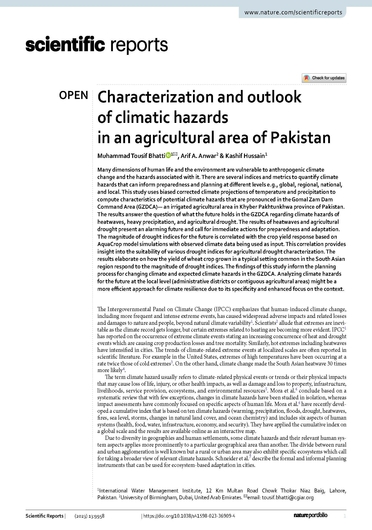Characterization and outlook of climatic hazards in an agricultural area of Pakistan
Abstract
Many dimensions of human life and the environment are vulnerable to anthropogenic climate change and the hazards associated with it. There are several indices and metrics to quantify climate hazards that can inform preparedness and planning at different levels e.g., global, regional, national, and local. This study uses biased corrected climate projections of temperature and precipitation to compute characteristics of potential climate hazards that are pronounced in the Gomal Zam Dam Command Area (GZDCA)— an irrigated agricultural area in Khyber Pakhtunkhwa province of Pakistan. The results answer the question of what the future holds in the GZDCA regarding climate hazards of heatwaves, heavy precipitation, and agricultural drought. The results of heatwaves and agricultural drought present an alarming future and call for immediate actions for preparedness and adaptation. The magnitude of drought indices for the future is correlated with the crop yield response based on AquaCrop model simulations with observed climate data being used as input. This correlation provides insight into the suitability of various drought indices for agricultural drought characterization. The results elaborate on how the yield of wheat crop grown in a typical setting common in the South Asian region respond to the magnitude of drought indices. The findings of this study inform the planning process for changing climate and expected climate hazards in the GZDCA. Analyzing climate hazards for the future at the local level (administrative districts or contiguous agricultural areas) might be a more efficient approach for climate resilience due to its specificity and enhanced focus on the context.

